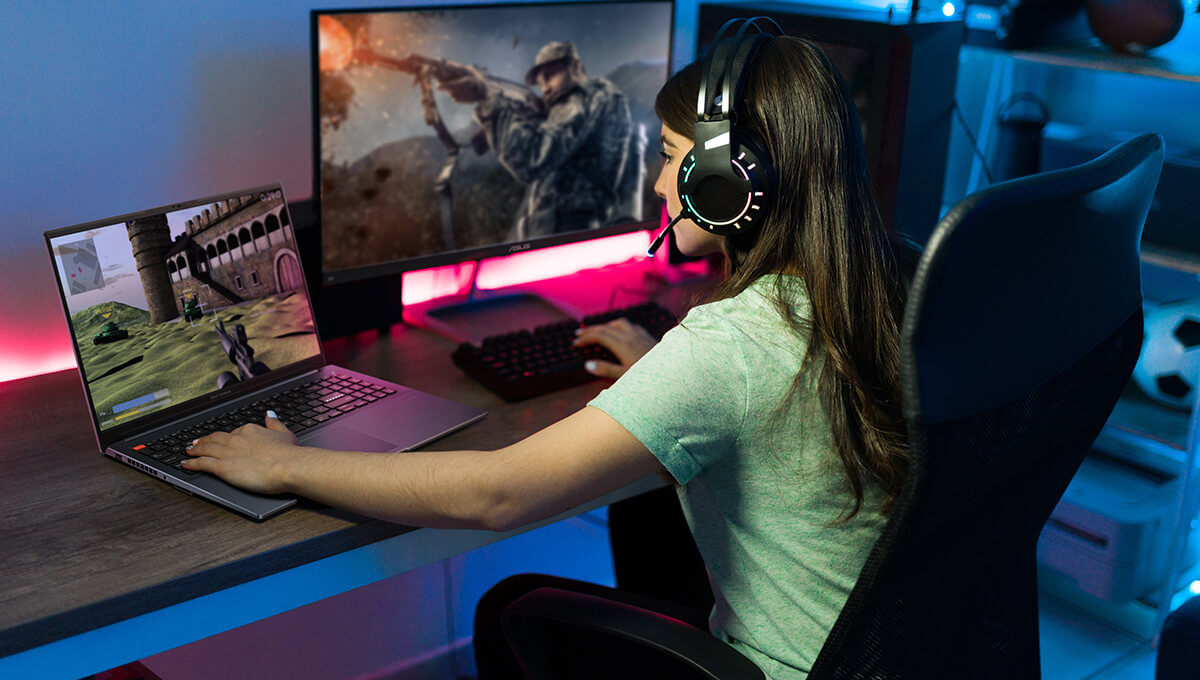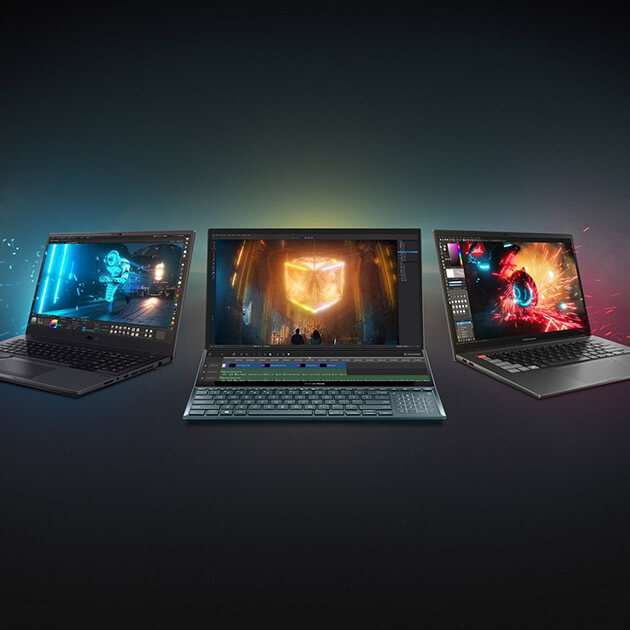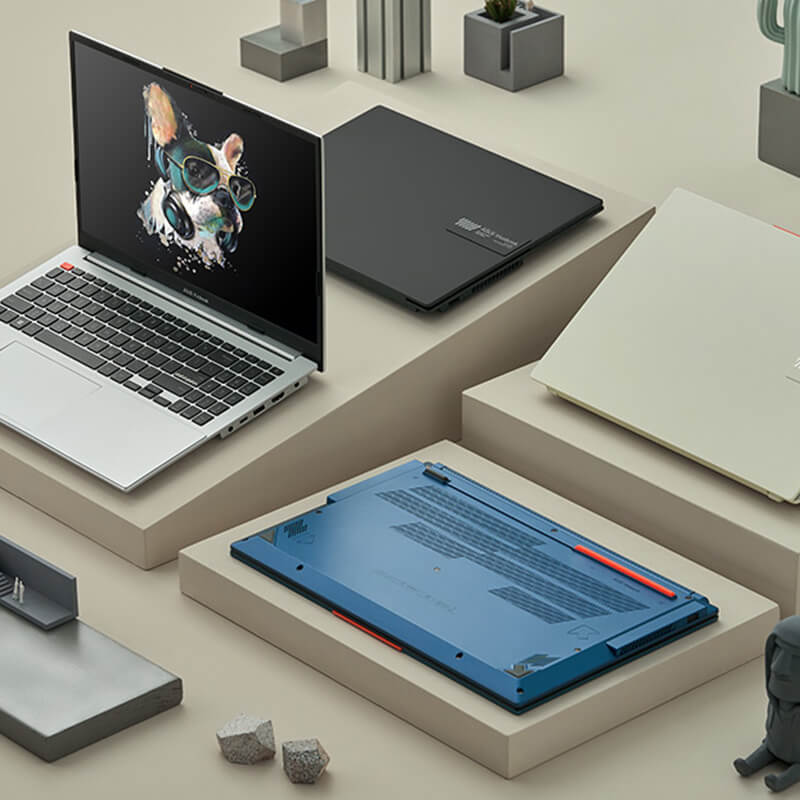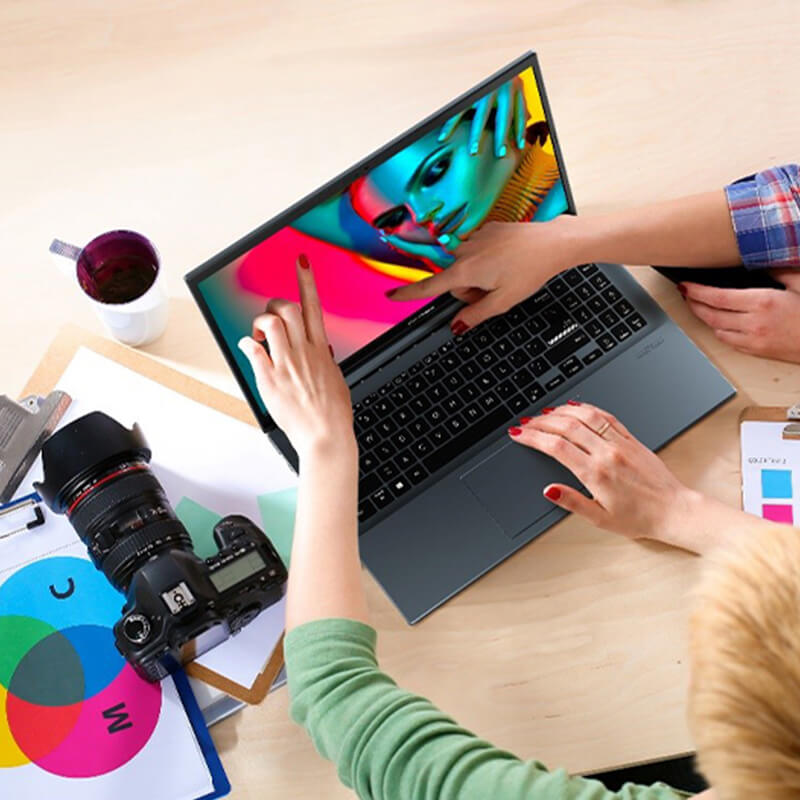
Jan 15, 2024
Choosing a laptop for a teenager can be tricky. There are many
things to consider.
This article offers insights and information to help you decide
which laptop is most likely to keep your kid happy for years to
come, as an essential tool for school work, hobbies, or other skills
that could someday translate into a career!
Purpose
The first thing to consider when purchasing a laptop is what it will
be used for. In the case of younger adults, the uses may be diverse.
First, there is school. Much learning these days is done online or
via digital media. It's quite common for teenagers to bring their
laptops with them to school for taking notes, collaborating with
peers, or for completing assignments.
Where artistic souls of the past may have gone for paper and a set
of colored pencils, teenagers nowadays may choose graphic design,
compose music, create and edit videos, or maybe even dabble in 3D
content creation. These hobbies can very easily become lucrative
careers. Creative software, however, is pretty power-intensive, so
the laptop you choose will need to be quite strong.
Gaming (and streaming it) is also popular among young adults. Some
games, too, can be very power-hungry.
Finally, most teenagers are massive content consumers. Between
streaming shows and movies, watching their famous influencers on
YouTube, to actively participate in livestreaming communities on
platforms like Twitch, they’ll likely be spending long hours in
front of their screens. Having their eyes protected should be a big
consideration when shopping for a laptop for a teenager.
So to get the best bang for your buck and not have to shop for a new
laptop very soon, we’d recommend that you buy a laptop that can
fulfill all these needs, if possible. Let’s see what would make a
laptop suitable for that.
Processor and Graphics
Processor (also known as CPU) and graphics card (also known as GPU)
will contribute largely to what can and cannot be done with the
laptop. It’s unlikely that you’ll want to go for top-notch specs
(especially since as a general rule, the more powerful the laptop,
the more weight and bulk it will have). But you’ll want something
with a decent kick.
When it comes to a processor, consider buying a laptop with a
latest-generation Intel® Core™ i7 or AMD Ryzen™ 7. These are
relatively powerful CPUs strike a good balance between performance
and price, too.
For graphics, we recommend that you opt for a dedicated GPU option —
a graphics chip that is separate from the processor. Creative
software and games usually lean quite heavily on the processing
power of a graphics card. This is going to cost a bit extra, but it
may just be worth it. You don’t need top-notch, a decent, modern
dedicated GPU will do just fine. This will be something like the
NVIDIA® GeForce RTX™ 4060 laptop GPU, for example. It’s a great
option for non-professional content creators and gamers.
And one thing to keep in mind: these two parts are usually not
upgradeable in a laptop. So, if you purchase something that doesn't
meet your teenager's requirements, you'll need to swap the whole
machine for a new one. In addition, the processing power
requirements of nearly all software (especially creative software
and games) are ever-growing, so the more powerful the laptop, the
more future-proof it may prove. Spending a bit more on a higher-spec
machine may save you a good bit of money in the long run!
Memory and Storage
Memory and storage are also important considerations. The more
memory (also known as RAM), the more smoothly your kid will be able
to use many apps at once — and that is usually the reality. There
are two things to consider here: the RAM volume, and whether it is
upgradeable. It's best if you go for at least 16 GB of memory.
Having the option to upgrade it if needed, though, can go a long way
in saving money and allowing your kid to do more with a small
upgrade. Look in the spec sheet for whether the laptop features
available SO-DIMM (popular laptop RAM technology) slots that would
allow them to just add another memory dice in if needed.
Storage will determine how many files your kid will have at hand,
right on their laptop. 512 GB is a good number, but if you can, 1 TB
would give your kid more comfort. In many laptops, this can also be
upgraded — check whether there are swappable or free SSD slots in
the laptop.
Form Factor, Size, and Weight
Many attractive laptop kinds may be very well suited for certain
users. For example, a two-in-one convertible laptop with a
360-degree hinge and a touchscreen can be great for students to take
handwritten notes and draw. However, for most teenagers, the classic
clamshell laptop will do the trick just fine — and they tend to be a
bit cheaper.
The trickier part here will be the size and weight of the laptop.
Laptop size is determined by two dimensions: the screen size and the
thickness. For screen size, you may want to opt for the 15.6-inch
variant. It's one of the most popular laptop sizes that strikes a
good balance between good readability and space for work, and
portability (many backpacks that have a laptop sleeve have been
designed for 15.6-inch laptops). When it comes to thickness, the
more power, the less thin the laptop will be, generally (mainly due
to the cooling inside it), but something below 2 cm (about 0.79 in)
should be just fine.
Then there is the weight. Once again, the more powerful the laptop
and the more "solid" the materials used in it, the more it will
weigh. But it doesn't have to be a total brick. Many powerful
laptops come with a weight of less than 2 kg, which should prove to
be an alright number.
Display
Considering all the time your kid will spend in front of the
laptop's screen, a display is where you will not want to compromise.
As you may know, computer screens can contribute to eye strain,
which can in the long-term lead to sight damage. The often-quoted
culprits are the blue screen and flicker. Low brightness and
contrast can also be contributing.
We recommend that you opt for an OLED display, such as one of the
ASUS Lumina OLED ones. These screens are not only more colorful and
crisper, OLED screens emit up to 70% less blue light and are
flicker-free. With higher brightness and great contrast and color
performance at all brightness levels, it's also easy to see on the
screen most of the time, which can contribute to decreasing eye
strain, too.
Durability
Your teenager thinks of many things every day but let us tell you:
protecting a laptop is likely not one of the things they give a lot
of thought to. So, you’ll want a durable laptop. Check for the
materials used and if you have a chance, examine the chassis for how
solid it feels. You’ll want as much metal as possible.
To help you gauge whether a laptop is durable, ASUS laptops go
through rigorous US Military-Grade testing for durability to ensure
they can withstand everyday challenges with ease. And being carried
around in an active teenager's backpack all day is a challenge
without a doubt.
The Look
Finally, the look. As much as it may be tempting to choose something
you'd consider elegant and classy, your teenager may not appreciate
such a look as much as you would. Teenagers tend to value
individuality and have bold fashion tastes. The laptop should fit
into their aesthetic preferences as well. You'll want something that
looks urban, maybe even a little rugged, and perhaps with
not-so-conservative colors. But on the other hand, you'll also want
to buy something that still looks universal to look appropriate at
school as well. We may have something just like that!
Our Pick: ASUS Vivobook Pro 15 OLED
ASUS Vivobook Pro 15 OLED is a great example of a laptop that has a
high chance of satisfying most teenagers. It’s a powerful machine
that was designed for creative hobbyists. It comes with up to the
latest-generation Intel® Core™ i9-13900H processor and a dedicated
NVIDIA® GeForce RTX™ 4060 graphics card with NVIDIA Studio Driver
support. It’s also equipped with up to 32 GB of memory and has an
upgradeable SO-DIMM slot, as well as up to 2 TB of fast memory —
once again, upgradeable.
It’s quite compact, with only 1.8 kg of weight and 1.9 cm (about
0.75 in) thinness. In the compact body, it has a full lineup of
connection ports to meet virtually any connectivity needs most
teenagers may have.
This laptop boasts a beautiful 15.6-inch OLED display with a 3K
resolution, a 120 Hz refresh rate, and a comfortable and universal
16:9 aspect ratio. It’s bright (600 nits) and color-accurate
(Pantone validated, 100% DCI-P3 color gamut), and protects the eyes,
with up to 70% less blue light emissions.
And finally, it looks great! It comes in 2 universal colors: Quiet
Blue and Cool Silver. But the devil lies in the details. You will
find a bunch of great-looking bold accents on it, such as the orange
escape key or the striped enter key. On top of the metallic lid,
there is a raised logo tab that carries an important message — the
motto of the ASUS Vivobook family: Go further, be fearless, explore
the possibilities.
As a cherry on top, the ASUS Vivobook Pro 15 OLED is very
attractively priced, offering a top-notch performance-to-cost ratio.
Be sure to check it out in more detail by clicking the button below!
Discover the ASUS Vivobook Pro 15 OLED












